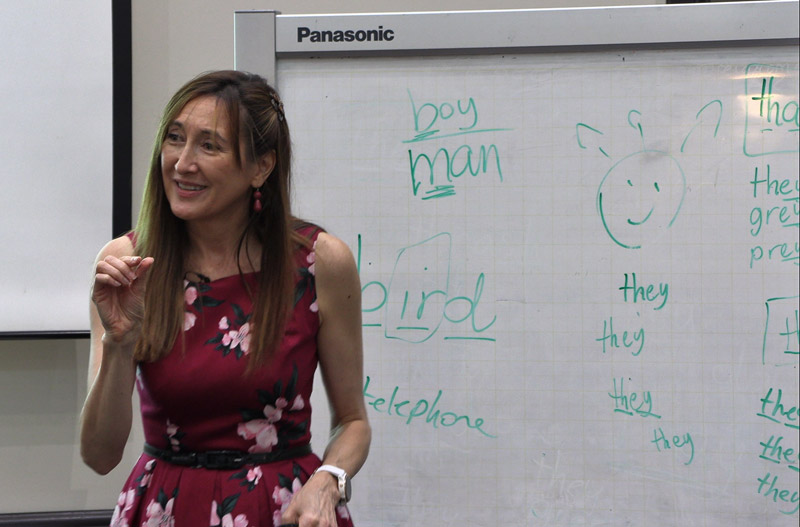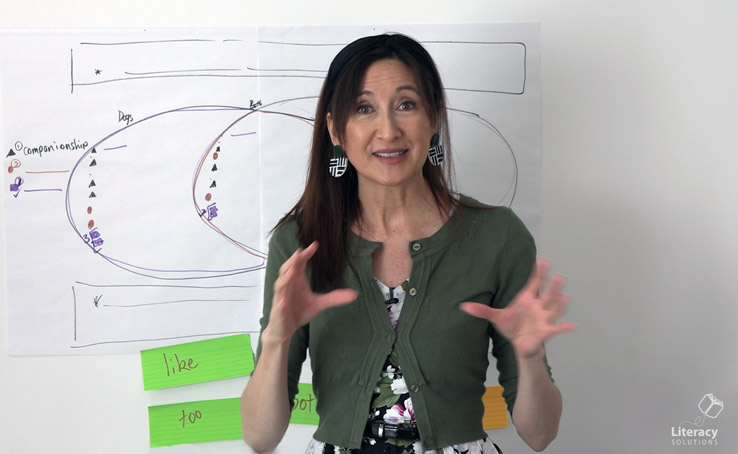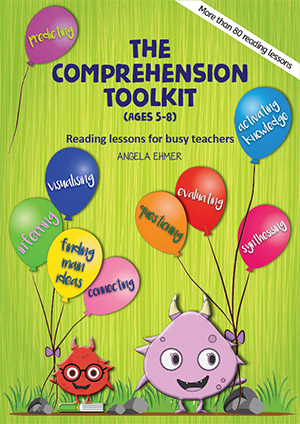The Literacy Block – 10 FAQs
The classroom literacy program, sometimes referred to as the Literacy Block enables teachers to timetable for explicit teaching across reading, writing, speaking and listening, accompanied by differentiated learning, the independent application of skills and knowledge and a time to reflect or share.
In reading, approaches commonly used for explicit instruction include modelled reading and shared reading. These lessons may run for 15-20 minutes, with mini-lessons running for shorter periods than this (up to 10 minutes). Differentiated instruction includes adult supported guided reading or reciprocal teaching which operates alongside independent learning tasks, or literacy centres aimed at the development of mastery.
In writing, the approaches used for explicit instruction include modelled writing or joint construction. In the differentiated component, students may participate in interactive writing or guided writing, whilst the remaining students engage in independent learning, or literacy centres, again with the purpose of developing mastery.
Share or reflection time for both reading and writing, may involve a learning reflection or the sharing of reading or writing tasks undertaken.
Numerous questions arise when teachers aim to implement an effective literacy block. The following are commonly heard.
What is the purpose of independent learning tasks (ILTs) or literacy centres?
Independent learning tasks should provide students opportunities to practice applying language and literacy skills and knowledge, in order to develop mastery, or automaticity. Automaticity is achieved when students’ knowledge of and familiarity with the skill or knowledge has been practised enough for its application to become a rapid, automatic response, executed without the need for active problem solving or remembering.
Do students need to work in groups when undertaking ILTs?
Students are able to work alone or with other students. The aim of independent learning is for students to apply skills and knowledge without requiring ongoing support from others. Working alone enables students to apply learning with no support at all; working with a buddy within a group of peers enables students to apply the learning with some support and often challenges the thinking of individuals within groups; working with an adult enables students to apply a skill or action with additional teaching/coaching/support provided as needed.
Are group rotations compulsory?
No. Rotations are one option for organising and structuring independent learning tasks, but are not compulsory. A balanced mix of independent, cooperative and collaborative learning produces effective learning outcomes.
What is a Task Management Board?
A task management board is a way of displaying the tasks or activities to be undertaken. The task management board enables students to see when they will be working with the teacher on guided reading or writing and also identifies the tasks and (perhaps) when the tasks will be undertaken over the planned schedule.
Tasks are usually planned over a weekly or fortnightly basis, but may be planned over longer or shorter periods of time. Ways of displaying tasks include, but are not limited to:
- a table, resembling a chart or roster,
- a wheel (same idea but with a different presentation style),
- as labelled picture cards on a display board with new group names displayed each day, or
- photocopied for individual use (contract style so that students work at their own pace, completing tasks within a flexible schedule).
How do I plan ILTs?
Independent learning tasks are linked to what has been learned during whole class, small group and even individual sessions. The independent tasks ensure that students transfer and generalise what has been learned to their own reading and writing.
What do I do if my students cannot work independently?
Most students require training and coaching to maximise the learning opportunities during independent learning. Students should be made aware of the purpose of independent learning, what teachers expect to see as visible outcomes of the learning (i.e. ongoing improvement in the use of skills and strategies, leading to mastery) and of expectations of learning habits and behaviour.
There are clear goals associated with the independent learning; these are compromised if tasks assigned are “busy work”, or work provided only to free the teacher up to work with a group.
Building reading, writing and working stamina and troubleshooting issues likely to arise during independent learning, supports students to develop independence and increase their problem solving potential.
Can I use commercially produced products to support independent learning?
Effective teachers are able to use a range of resources to support learning. Take care to consider the pros and cons of pre-packaged products and adapt their use if needed to ensure the best possible outcomes. Be aware that products or programs which enable students to make mistakes which are not corrected can develop bad habits which need addressing later on.
For example, some reading programs require students to read and answer questions. Scores are given and students move to a new text. Students may struggle to answer a particular question type and may develop a habit of answering in a particular way which is incorrect. The program does not have the capacity to teach the student how to understand the question and the student may practise this error until an adult recognises the problem and intervenes. The longer something is practised, the longer it may take to rectify!
How frequently should I see students for Guided Reading or Guided Writing?
Students should be seen frequently. Each group should be seen for approximately 30 to 40 minutes each week. This may equate to 2 x 15 – 20 minute sessions or one longer session depending on the ages and abilities of students.
How much time is dedicated to whole class learning?
Lesson lengths vary depending on purpose and audience. Frequent, short whole class mini-lessons of up to 10 minutes duration allow for rigorous, focussed instruction around clear learning goals. Longer lessons are dependent on student ages and the purpose of the lesson. Teachers may adjust times to suit learners and learning experiences.
How do I timetable everything into the literacy block each week?
Timetabling the literacy block is not as complicated as you might imagine. The key is to structure the program around the foci of learning each week. You need to sharpen the focus of explicit teaching to meet specific learning goals and remember that flexibility in your program is critical.
A sample literacy block planner shows one example of how this might look. Always modify any plan to fit the specific focus you’re aiming for and the number of groups and / or activities you have.
The aim of the Literacy Block is for students to become better readers and writers. All components of the Literacy Block should be informed by formal data and ongoing observations. Therefore explicit teaching should be carefully planned around curriculum requirements and the skills and knowledge of learners; adult directed small group instruction should support students to apply skills and knowledge as they deconstruct or construct texts.
What issues challenge you when planning or implementing the literacy block? How have you overcome these challenges? I look forward to hearing your thoughts.





Thanks Angela,
Always enjoy reading your blogs. So many helpful tips.
Kerry
This year has seen my most successful literacy block. In my year one class it is all about ‘How long can I expect a sit and do session?’ At first it was 15 minutes and now it is the full 30.
So the Block looks like this-
9-9.15 Spelling/ phonics group teaching on floor
9.15-9.30 Spelling activity at desks
9.30 – 10.00 Handwriting – highly structured and guided
10.00 reading groups
1. With teacher
2. Phonics and writing with TA
3. Listening centre
4. Reading comp activity or computer or phonic/ sight word game
10.30 guided reading/ language unit work
The kids are kept very busy with explicit consistent tasks. The kids have folders and file boxes for their work with guaranteed feedback from the teacher. It is a tight ship, but the predictability and strict boundaries keep most on track…most of the time.
